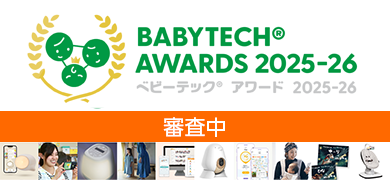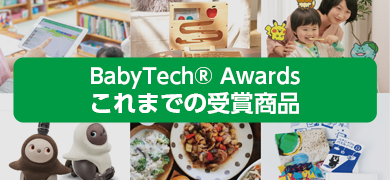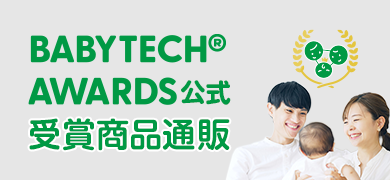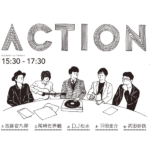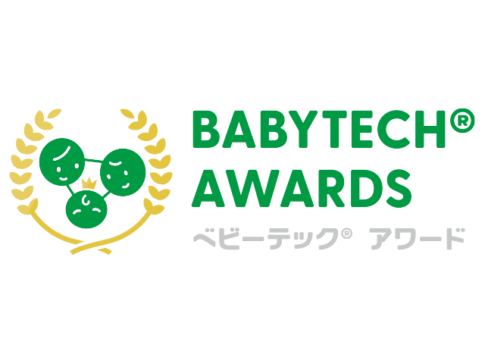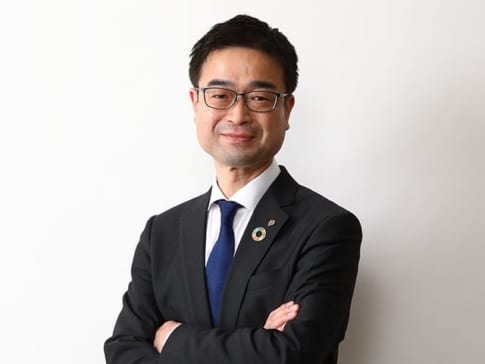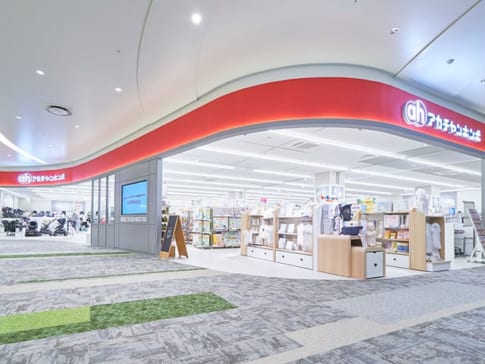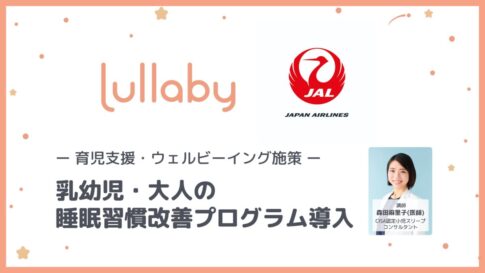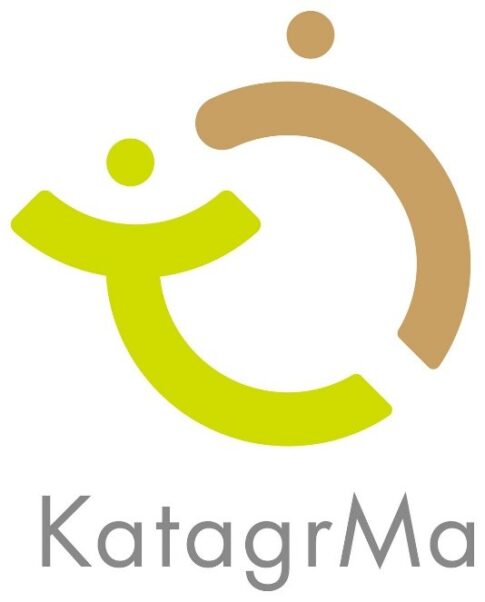- An application that allows you to easily record various information about your baby that you want to keep on your smartphone.
- Recorded data can be easily "aggregated and visualized" in graphs to clearly show growth and changes
- Analyzes big data collected from users and provides various types of useful advice for childcare
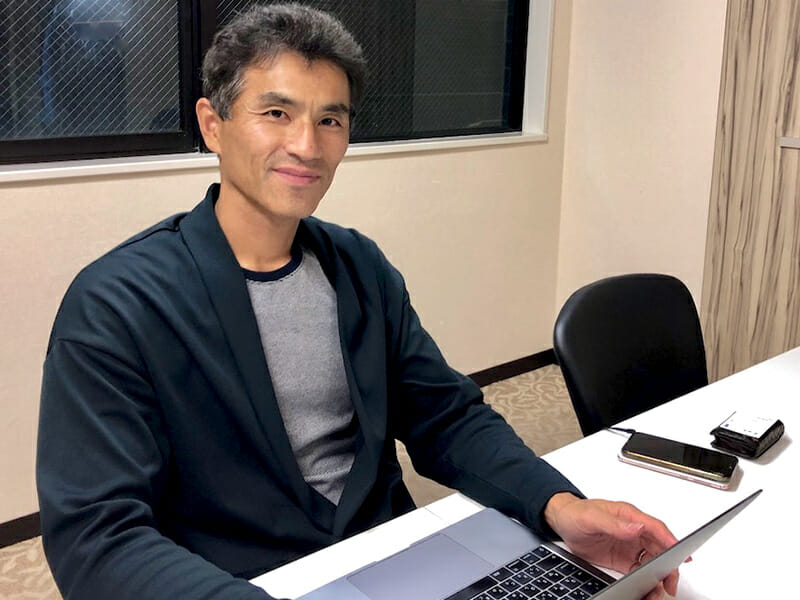
(We spoke to...)
First Ascent Inc. Representative Director and CEO
Mr. Banyuki Hattori
The birth of my child" was the catalyst for the development of the app.
Editorial: Can you give us a quick overview of the "Papatte Ikkoiku@Baby Notebook"?
Hattori: It will be a "childcare record application" that records the time the child slept and woke up, the time and amount of milk taken, the time and condition of pooping, and various other records such as, "For the first time, he/she is able to do ________". Originally, my wife kept a handwritten record of our childcare, and while watching her, I thought, "Isn't there an app that can conveniently keep track of this? I thought, "Isn't there an app that can record child-rearing conveniently? At the time (around 2012), there were not many such apps, and even if there were, they were not easy to use. For example, I thought that if I recorded the "amount of milk I gave her to drink," it would be nice to automatically tally and graph the amount of milk she drank in a day, but there were almost no apps that had such a function. If there was no app that could "visualize" data like that, I thought I would make one myself.
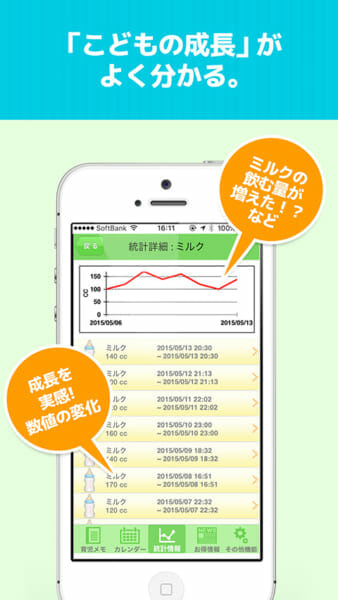
The "amount of milk" that the baby has drank is graphically displayed and is clearly visible!
Also, my wife at the time was very stressed and irritable, and a few years after our first child was born, she said, "Now that I think about it, I think I may have had postpartum depression. So I thought that if I could "visualize" the record of childcare, I could better understand the child's condition and reduce my wife's anxiety, which was one of the reasons for the development of the application.
Finally, I had also thought from the beginning of the application development that it might be possible to solve some problems regarding childcare by "utilizing big data. Since I had completed graduate school and had done research at a company, I was familiar with building evidence and handling data, so I thought that if I could do that, I would be able to build social value.

The menu you want to record is iconized and very easy to understand
Editorial: I have just looked at the handwritten childcare record that your wife kept, and I see that she recorded very detailed data.
Hattori: Yes, I do. But I don't think my wife is special. In fact, as we found out after releasing "Papatte Childcare @ Baby Notebook," many mothers keep quite detailed and frequent records. My initial assumption was that users of the app would keep records in their spare time, but most of them kept records in almost "real time," such as when they fed their children milk and when they changed diapers. Thanks to the dozens or more "records" taken every day in this way, we were able to get a good idea of the children's daily rhythms on the app, and we were able to utilize this as big data to realize a variety of services.
Editorial: The ability to record in real time with one hand using a smartphone is a unique advantage of the app.
Hattori: Yes, I know. My wife, who used to "handwrite in a notebook," would write in batches whenever her hands were free. I feel that the smartphone app has lowered the hurdle of "recording" and made it possible to keep more detailed data.
Big data analysis" is the biggest feature of the application and its effectiveness
Editorial: There are many apps similar to "Papatte Childcare @ Baby Notebook" that have appeared recently, how are they different?
Hattori: I still think it is the provision of various services through "big data analysis.
Editorial: The "Papattekoiku@Baby Notebook" is still wonderful for its "cry diagnosis," which shows why a baby is crying by "baby's cry.

Analyze "baby's feelings" from "baby's cry!
Hattori: Thank you. Originally, we used an algorithm that analyzed the cries of "children from 2 weeks to 6 months of age," but the current version has collected a cumulative total of over 150,000 data points, allowing us to analyze the cries of babies of a wider range of ages.
The application also analyzes the "frequency of nighttime crying," and a "nighttime crying alert" notification is issued for babies who cry a lot at night. When a baby cries at night, it is very difficult for a mother to get a good night's sleep. However, it is difficult to know whether your child cries frequently at night because you cannot compare your child's frequency with that of other families. The "Night Crying Alert" shows this to mothers as objective statistical data. Specifically, the "Night Crying Alert" is issued when a baby cries at night more frequently than the top 30% among babies of the same age.
The benefit of this alert is that it creates communication in families where the mother had previously been left to deal with nighttime crying. In fact, in 60% of the families where the alerts were displayed, couples talked about how their children seemed to cry a lot at night, and half of them, or 30% of all fathers, changed their behavior, waking up to make milk or carrying their children when they cried at night. In other words, fathers woke up when their children cried at night, made milk for them, held them in their arms, and nursed them....

Night Crying Alert" supports "Parenting as a Couple
In fact, when my first child was born, I thought, "My child doesn't cry much at night. ...... However, according to my wife, the truth was that he cried intensely at night and was having a very hard time. When I released this application and looked at the data I had compiled, I understood at a glance the fact that babies really do cry a lot at night. Then I reflected very much, "I must have been sleeping without noticing my child crying at night. ......" With that sense of repentance, I created this "Night Crying Alert" function. So you want mothers to negotiate with fathers using this function. After all, men are more likely to move when confronted with "numerical facts.
Editorial: How did you develop the "Baby Crying Diagnostic"?
Hattori: This is also my experience, but fathers are very stressed when their babies are crying because they do not know why they are crying or how to make them stop crying. This was evident in our surveys, and when we asked for ideas for new services, we often received requests to tell us what the baby was crying about, like "Bauri" (a toy that translates dog sounds). I also felt that I would really like to know "why babies are crying" myself.
Furthermore, from a business perspective, from the perspective of which field of research and development a company should conduct ......, there are not many companies in the world that can collect "a large amount of baby cry data" like we can. And compared to "deep learning of images," there are few examples of research on "deep learning of speech," and among them, "deep learning of non-verbal speech," so we thought we could build a unique position in the world. I also felt strongly that if I were going to do this, I wanted to work on something "unexplored" that no one had yet done, and this led to the development of "baby cry diagnostics.
The "Thoughts of an App User" has also become a Twitter buzzword.
Editorial: How many people use "Papatte Ikkoiku@Children's Handbook"?
Hattori: It is roughly half a million people.
Editorial: What are some of the comments from people who use the system?
Hattori: Papatto Ikkoiku@Children's Notebook" displays icons on the screen when the application is launched, so many users comment that it is easy to record data. Also, since you can enter the "start time" and "end time" of the "event to be recorded (e.g., breastfeeding)," our app is often chosen by those who want to keep detailed data anyway. Also, the "baby cry diagnosis" is a function that other companies' apps do not have, so we have many "fathers' voices" who find this useful and use it. Generally speaking, mothers spend a lot of time with their children, so they are able to understand what they want their children to do or say, and they are not affected by a little crying in the first place, but many fathers do not understand such things and do not have a tolerance for crying. That is why we often hear of cases where they sometimes leave their children with us and they cry, and as a result of searching ...... for something, they used our application.
Others said that the "baby cry diagnosis" changed the way they handle their children ....... One commenter said that he used to "just breastfeed" his child when he cried, but when the diagnosis indicated that he "wanted to sleep," he tapped him gently on the back, and he fell asleep easily. On the other hand, the baby who did not fall asleep no matter how much I held her in my arms and tapped her back, fell asleep immediately after I breastfed her because the diagnosis indicated that she was "hungry.
Furthermore, on Twitter, tweets from people using the "Night Cry Alert" have received over 10,000 "likes" on Twitter. About 95% of the tweets were positive and 5% were negative about this "Night Cry Alert" function. But when I actually looked at the tweet, I found that it was a tweet from a father who said, "If they put this feature on, I'll have to help with childcare. In any case, many fathers "underestimate" the fact that their mothers are not sleeping due to their babies' nighttime crying. If they knew that moms are not sleeping as much as they imagine through "Night Cry Alert," they would be a little kinder to them.
New hardware born from "baby cry diagnostic technology
Editorial: Can you tell us about your company's future initiatives?
Hattori: Recently, our efforts have been selected by the Ministry of Economy, Trade and Industry (METI) for its "Monozukuri Startup Ecosystem Development Project". This is a subsidized project for the "development of hardware" equipped with our "baby cry diagnosis technology. By placing this device at the baby's bedside, it will be able to automatically "detect nighttime crying" and "analyze crying sounds," and also check whether the crying sounds are different from usual.

Mr. Hattori talking about the new hardware
Editorial: So you can monitor your baby's cries 24 hours a day, 7 days a week, 365 days a year, without having to use your phone!
Hattori: This will be exhibited at the world's largest consumer electronics trade show (CES) in Las Vegas, USA, in January 2020. We have also received numerous inquiries about this voice analysis algorithm from overseas hardware manufacturers. We are also working on another new initiative behind the scenes, which we expect to announce around April next year.
<After the interview
In fact, when our one-year-old daughter's cries were analyzed by "Papattekoiku@Baby Notebook," they were quite often correct, and we were able to put her to sleep smoothly many times. I also felt that the "big data analysis" called "Night Crying Alert" would promote cooperation between husband and wife in childcare, which is the very ideal of BabyTech. I am now looking forward to the birth of "new hardware" that can be installed at the baby's bedside!
First Ascent Corporation Official Website https://first-ascent.jp/
Papatte Ikkoiku@Children's Handbook" introduction homepage https://papaikuji.info/

